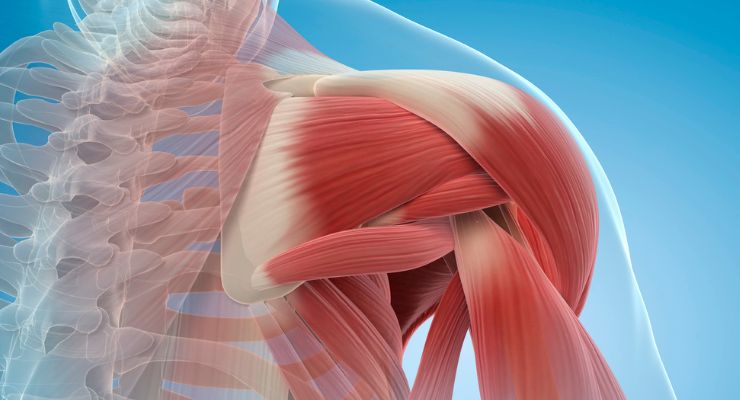Market Updates, Research
HMB and Vitamin D Supplementation Linked to Reduction in Fat Stores
Middle-aged participants who took the combined ingredients saw significant improvements in the ratio between muscle and fat content after 12 weeks.

By: Mike Montemarano

Supplementation with vitamin D and ꞵ-hydroxy-ꞵ-methylbutyrate (HMB), a metabolite of the amino acid leucine, may support reductions in adipose tissue, according to a new study published in Nutrients.
Specifically, the new clinical study found that following twelve weeks of supplementation, significant reductions in intermuscular adipose tissue (IMAT) were achieved in a group of 43 middle-aged women who took the combined ingredients.
According to John A. Rathmacher, PhD, principal investigator and director of clinical research for TSI Group, the supplier of the HMB ingredient used in the study, intermuscular fat may negatively effect metabolism.
“As we age, we exercise less or store more fat, and the concentration of intermuscular fat increases,” he said. “Increased IMAT can have a detrimental effect on metabolism, as well as muscle quality and function as we age.”
While age-related muscle mass loss often begins around age 30, the changing ratio between muscle and fat is not always obvious, Rathmacher said. “Whether our body weight goes up, goes down, or stays the same, it’s inevitable that our body composition is changing with an increase in fat mass at a rather remarkable rate, and that can be concerning.”
Further Reading:
HMB Supplementation May Benefit Delayed-Onset Muscle Soreness
A Clearer Path to Weight Management: The Ozempic Factor
Findings
The four-arm study randomized the 43 participants to receive either the combination of vitamin D and HMB or a placebo, and those groups were divided into subgroups involving a non-exercise sedentary control or a progressive resistance exercise training program. Using MRI, the researchers determined changes in lean muscle mass and IMAT in the participants across the study duration. The researchers also evaluated vitamin D levels at baseline and at intervals throughout the study.
HMB and vitamin D supplementation was evidenced to maintain muscle size in sedentary conditions, and to decrease IMAT in middle-aged women with vitamin D3 sufficiency, independent of exercise. However, these benefits were not achieved in women who remained vitamin D insufficient.
On average, the participants were vitamin D deficient at baseline, and achieved sufficient blood concentrations between eight and 12 weeks.
The authors concluded that additional studies would be needed in order to determine if the benefits seen in this study could be extrapolated to other populations who might be prone to benefit from HMB and vitamin D supplementation.
“In essence, because we looked at middle-aged adults, this study was like a prequel to work already done on HMB on older adults,” said Shawn Baier, MS, MBA, vice president of business development for TSI Group. “This age group and gender have greater purchasing power than older adults. And this study helps to explain why on a global scale we see middle-aged women buying HMB and vitamin D for themselves and their spouses as well as their older parents.”
“Muscle mass-related changes in body composition start in our thirties,” Baier continued. “We now have even mmore evidence that long-term use of HMB and vitamin D, plus proper nutrition and exercise starting in our thirties will help maintain our muscle function and quality of life.”
HMB’s History of Research
HMB has dual functions related to muscle health, both stimulating protein synthesis and reducing muscle breakdown. It is associated with improvements to lean body mass, muscle strength, and physical function in older adults, and benefits historically have been more pronounced when the metabolite was co-administered with vitamin D.
In 2020, TSI Group published a year-long, double-blind, placebo-controlled study which found that HMB and vitamin D improved muscle function in older adults even without exercise. The study was supported by a grant from the National Institutes of Health (NIH) and was published in the Journals of Gerontology.


